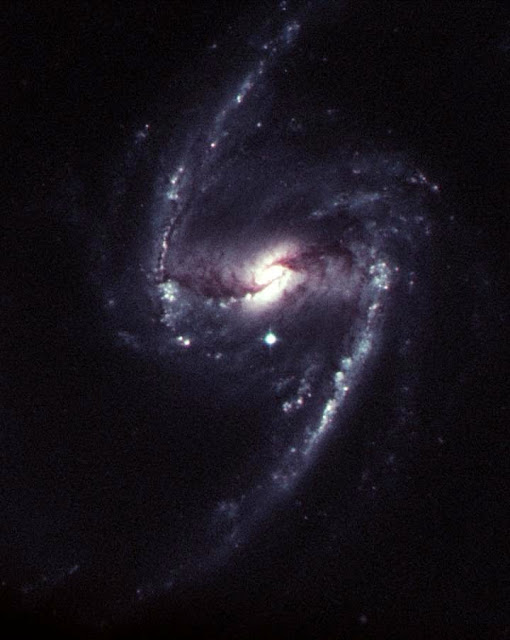| Online: | |
| Visits: | |
| Stories: |

| Story Views | |
| Now: | |
| Last Hour: | |
| Last 24 Hours: | |
| Total: | |
Supernova Ignition Surprises Astronomers
The scientists used the Kepler space telescope to photograph three type 1a supernovae in the earliest stages of ignition. They then tracked the explosions in detail to full brightness around three weeks later, and the subsequent decline over the next few months.
Supernova SN2012fr, just below the center of the host galaxy, outshone the rest of the galaxy for several weeks.

Credit: Brad Tucker and Emma Kirby
“The stars all blow up uniquely. It doesn’t make sense,” said Dr Brad Tucker from The Australian National University (ANU).
“It’s particularly weird for these supernovae because even though their initial shockwaves are very different, they end up doing the same thing.”
Before this study, the earliest type 1a supernovae had been glimpsed was more than 2.5 hours after ignition, after which the explosions all followed an identical pattern.
This led astronomers to theorise that supernovae, the brilliant explosions of dying stars, all occurred through an identical process.
Astronomers had thought supernovae all happened when a dense star steadily sucked in material from a large nearby neighbour until it became so dense that carbon in the star’s core ignited.
“Somewhat to our surprise the results suggest an alternative hypothesis, that a violent collision between two smallish white dwarf stars sets off the explosion,” said lead researcher Dr Robert Olling, from the University of Maryland in the United States.
At the peak of their brightness, supernovae are brighter than the billions of stars in their galaxy. Because of their brightness, astronomers have been able to use them to calculate distances to distant galaxies.
Measurements of distant supernovae led to the discovery that some unknown force, now called dark energy, is causing the accelerated expansion of the universe. Brian Schmidt from the ANU, Saul Perlmutter (Berkeley) and Adam Reiss (Johns Hopkins) were awarded the Nobel prize in 2011 for this discovery.
Dr Tucker said the new results did not undermine the discovery of dark energy.
“The accelerating universe will not now go away – they will not have to give back their Nobel prizes,” he said.
“The new results will actually help us to better understand the physics of supernovae, and figure out what is this dark energy that is dominating the universe.”
The findings are published in Nature.
Contacts and sources:
Dr. Brad Tucker
Source:



